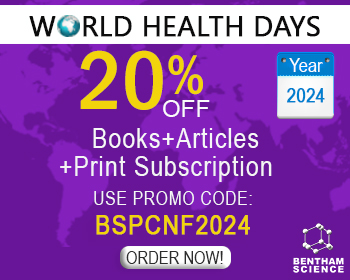Abstract
Acute lung injury/acute respiratory distress syndrome is a common clinical illness with high morbidity and mortality, which is still one of the medical problems urgently needed to be solved. Alveolar type 2 epithelial cells are an important component of lung epithelial cells and as a kind of stem cells, they can proliferate and differentiate into alveolar type 1 epithelial cells, thus contributing to lung epithelial repairment. In addition, they synthesize and secrete all components of the surfactant that regulates alveolar surface tension in the lungs. Moreover, alveolar type 2 epithelial cells play an active role in enhancing alveolar fluid clearance and reducing lung inflammation. In recent years, as more advanced approaches appear in the field of stem and progenitor cells in the lung, many preclinical studies have shown that the cell therapy of alveolar type 2 epithelial cells has great potential effects for acute lung injury/acute respiratory distress syndrome. We reviewed the recent progress on the mechanisms of alveolar type 2 epithelial cells involved in the damaged lung repairment, aiming to explore the possible therapeutic targets in acute lung injury/acute respiratory distress syndrome.
Keywords: Alveolar type 2 epithelial cells, acute lung injury, acute respiratory distress syndrome, surfactant, alveolar fluid clearance, surface-active proteins.
[http://dx.doi.org/10.1016/j.resp.2014.10.006] [PMID: 25466727]
[http://dx.doi.org/10.1016/j.ejcb.2011.11.004] [PMID: 22284832]
[http://dx.doi.org/10.1016/j.trsl.2012.01.007] [PMID: 22424425]
[http://dx.doi.org/10.1016/j.yexmp.2015.03.005] [PMID: 25746665]
[http://dx.doi.org/10.1186/1476-9255-10-6] [PMID: 23394254]
[http://dx.doi.org/10.1186/2046-4053-3-48] [PMID: 24887266]
[http://dx.doi.org/10.1001/jama.2017.21907] [PMID: 29466596]
[http://dx.doi.org/10.1002/wdev.58] [PMID: 23799633]
[http://dx.doi.org/10.1038/nm.3642] [PMID: 25100528]
[http://dx.doi.org/10.1007/978-1-62703-125-7_10] [PMID: 23097106]
[http://dx.doi.org/10.1186/s12931-017-0635-5] [PMID: 28784128]
[http://dx.doi.org/10.3109/01902148.2012.713077] [PMID: 22888851]
[http://dx.doi.org/10.1016/j.cell.2005.03.032] [PMID: 15960971]
[http://dx.doi.org/10.1371/journal.pone.0071028] [PMID: 23940685]
[http://dx.doi.org/10.1371/journal.pone.0048451] [PMID: 23119022]
[http://dx.doi.org/10.1038/nbt.2754] [PMID: 24291815]
[http://dx.doi.org/10.1016/j.stem.2017.03.001] [PMID: 28366587]
[http://dx.doi.org/10.1089/ten.tea.2012.0066] [PMID: 23176317]
[http://dx.doi.org/10.1089/cell.2015.0015] [PMID: 26679635]
[http://dx.doi.org/10.1152/ajplung.00357.2017] [PMID: 30211653]
[http://dx.doi.org/10.5966/sctm.2013-0142] [PMID: 24763685]
[http://dx.doi.org/10.1016/j.jcyt.2017.09.003] [PMID: 29056548]
[http://dx.doi.org/10.1186/2050-490X-2-7] [PMID: 25984335]
[http://dx.doi.org/10.21037/atm.2017.08.28] [PMID: 29264363]
[http://dx.doi.org/10.1038/mt.2009.317] [PMID: 20087316]
[http://dx.doi.org/10.1097/PCC.0000000000000667] [PMID: 26890195]
[http://dx.doi.org/10.1186/2197-425X-3-S1-A803]
[http://dx.doi.org/10.1016/j.healun.2017.10.025] [PMID: 29229270]
[http://dx.doi.org/10.1016/j.healun.2014.03.008] [PMID: 25023067]
[http://dx.doi.org/10.1016/j.chest.2016.03.021] [PMID: 27020420]
[http://dx.doi.org/10.1159/000346500] [PMID: 23406722]
[http://dx.doi.org/10.1172/JCI68782] [PMID: 23921127]
[http://dx.doi.org/10.1016/B978-0-12-416022-4.00008-1] [PMID: 24439808]
[http://dx.doi.org/10.1164/rccm.201409-1663OE] [PMID: 25723823]
[http://dx.doi.org/10.1186/s12931-016-0480-y] [PMID: 27923370]
[http://dx.doi.org/10.1165/rcmb.2013-0497OC] [PMID: 25474582]
[http://dx.doi.org/10.1038/nature12930] [PMID: 24499815]
[http://dx.doi.org/10.1165/rcmb.2017-0037MA] [PMID: 28586241]
[http://dx.doi.org/10.1152/ajplung.00014.2013] [PMID: 23709620]
[http://dx.doi.org/10.1152/ajplung.00032.2013] [PMID: 23831617]
[http://dx.doi.org/10.1016/j.chemphyslip.2014.09.002] [PMID: 25260665]
[http://dx.doi.org/10.1016/j.aanat.2016.09.008] [PMID: 27773772]
[http://dx.doi.org/10.1016/j.bbalip.2012.09.010] [PMID: 23026158]
[http://dx.doi.org/10.1016/j.biocel.2013.08.009] [PMID: 23988571]
[http://dx.doi.org/10.1007/s11033-010-0647-4] [PMID: 21153920]
[http://dx.doi.org/10.1513/AnnalsATS.201411-507FR] [PMID: 25742123]
[PMID: 27338059]
[http://dx.doi.org/10.1089/ten.tec.2013.0415] [PMID: 24102479]
[http://dx.doi.org/10.1016/j.ccc.2011.04.005] [PMID: 21742216]
[http://dx.doi.org/10.1128/mBio.00276-16] [PMID: 27143386]
[http://dx.doi.org/10.1016/j.ajpath.2015.01.022] [PMID: 25773174]
[http://dx.doi.org/10.1615/CritRevImmunol.v32.i2.20] [PMID: 23216611]
[http://dx.doi.org/10.4049/jimmunol.180.2.881] [PMID: 18178827]
[http://dx.doi.org/10.1371/journal.pone.0055545] [PMID: 23383221]
[http://dx.doi.org/10.1165/rcmb.2015-0171OC] [PMID: 26574781]
[http://dx.doi.org/10.1016/j.aanat.2017.03.002] [PMID: 28351530]
[http://dx.doi.org/10.1016/j.biocel.2016.11.003]] [PMID: 27836807]
[http://dx.doi.org/10.1038/ni.3045] [PMID: 25521682]
[http://dx.doi.org/10.1165/rcmb.2019-0071OC] [PMID: 31513752]
[http://dx.doi.org/10.1177/1535370219843827] [PMID: 30997832]
[http://dx.doi.org/10.1172/JCI99287] [PMID: 29920187]
[http://dx.doi.org/10.1172/jci.insight.86704] [PMID: 27699234]
[http://dx.doi.org/10.1016/j.nano.2013.05.004] [PMID: 23727098]
[http://dx.doi.org/10.1038/labinvest.2016.150] [PMID: 28218740]
[http://dx.doi.org/10.1172/JCI60331] [PMID: 22850883]
[http://dx.doi.org/10.1155/2011/174306] [PMID: 22131798]
[http://dx.doi.org/10.4049/jimmunol.1302421] [PMID: 24646745]
[http://dx.doi.org/10.7150/ijbs.15747] [PMID: 27570489]
[http://dx.doi.org/10.1152/ajplung.00307.2007] [PMID: 18024719]
[http://dx.doi.org/10.1016/j.ajpath.2011.05.017] [PMID: 21741940]




























